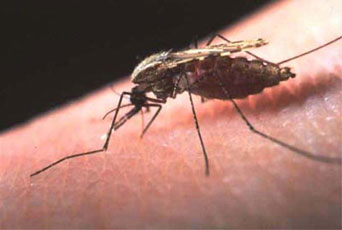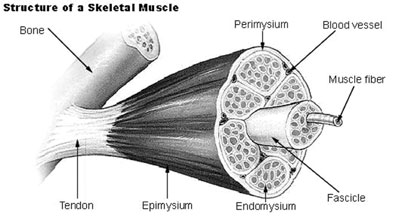|

Avoid drugs this festive season
By Carol Aloysius
 Today, we live in a society that is increasingly becoming dependent
on drugs (both medicinal and hard drugs), tobacco smoking and alcohol to
help us get through our frenzied pace of life . What we don’t realise is
what any drug, whether medicinal or hard drugs does to our bodies and
the adverse effects they have on our health. Today, we live in a society that is increasingly becoming dependent
on drugs (both medicinal and hard drugs), tobacco smoking and alcohol to
help us get through our frenzied pace of life . What we don’t realise is
what any drug, whether medicinal or hard drugs does to our bodies and
the adverse effects they have on our health.
This is more so in the case of substances such as heroin, ganja or
cannabis, hashish and marijuana, as the chemicals they contain are
mostly harmful,. Add to that smoking and alcohol, together they make a
deadly combination with wide ranging toxic impacts. Take Ganja. It
depresses the brain and is toxic to the liver.
In the brain it causes a
derangement of perception. A motorist under its influence is unable to
judge the speed at which he is driving and could end up crashing into
another vehicle or fatally wounding an innocent pedestrian. Pregnant
women using this substance can harm their unborn child for life. Taken
over a long period all of these substances can lead to loss of
inhibitions and moral and physical degradation.
Unlike in the past, Heroin is now the most commonly used drug
especially among young people introduced to this white powder derived
from their main alkaloid chemical found in opium (now almost a drug of
the past,) at parties and night clubs. These young persons are specially
vulnerable at this time of the year when the season is in full swing.
What they don’t realize is that just one experiment with the drug can
create a dependence syndrome causing immense harm to their heath, social
lives, families. Usually this habit of dependence creeps upon a young
person stealthily and becomes visible only when their school grades
begin to fall or attendance at school is irregular, when their friends
change and their language changes to usage of slang, when they stay out
late or all night.
This is why parents must always keep a watchful eye on their
children. Sometimes the least suspected member of the family could be a
drug user without their knowledge as many users are clever at hiding
their habit.
|
Statistics on
drug related arrests 2012
No. of in 2002 arrested was 47,926 of whom 35 percent were for
heroin. Majority of cases were from the Western Province (71 percent)
followed by the Southern Province (nine percent) and N. West province
(four percent).
Prevalence of drug related arrests were 283 per 100,000 population in
2012. Prevalence of drug related arrests above 14 years was 384 per
100,000 population in 2012. Methods used - For heroin inhalation (
chasing the dragon) is the preferred method. Cannabis and Hashish are
smoked while opium users mostly chew.
( from National Dangerous Drugs Control Board 2013 report)
|
A disturbing report released by the National Dangerous Drugs Control
Board released at the beginning of this month, shows that Sri Lanka has
an increasing number of drug abusers who are mostly young (between 15 -
35) and who belong to the lower strata of society.
Because of their impoverished backgrounds, poor literacy levels and
constant exposure to sexual, mental and physical abuses, they are at
present the most vulnerable segment of our society particularly during a
festive season.
The Sunday Observer asked the Head of the Toxicology Unit of the
National Hospital, Dr Waruna Gunathilake to tell us some of the health
impacts that consuming drugs has on our bodies and the symptoms to look
for in a family member...
Excerpts…
Question: What are the signs and symptoms of heroin abuse?
Answer: Heroin produces a “downer” effect that rapidly induces
a state of relaxation and euphoria (related to chemical changes in the
pleasure centres of the brain). Like other opiates, heroin use blocks
the brain's ability to perceive pain. Heroin abusers, particularly those
with prior history of drug abuse, may initially be able to conceal signs
and symptoms of their heroin use.
|
Some reasons why teenagers
turn to drugs
Curiosity- They want to experience new things, which include drugs.
Rebellion - Because using drugs is rebellious and its illegal and
forbidden.
Peer pressure - To fit in with groups involved in drugs is. Copying
others - If a role model is doing drugs, they might feel justified in
trying it too. Experimentation - They don't realise that an action today
can lead to very bad consequence tomorrow.
Feelings of indestructibility - Some teenagers tell themselves that
they can control anything, that they can control the use of drugs. But
many fail and turn to addiction. Forget problems - Teenagers turn to
drugs to escape their problem with the environment they live in.
Increase creativity and productivity - Some interpret altered states
as inspiration for creative ideas. Psychiatric problem - Teenagers with
mental illness like depression or a personalty disorder are more prone
to abuse drugs.
Weight loss tool - Some drugs do suppress appetite, but addiction
usually pushes the addict to place little importance to health.
|
Q. What are the symptoms associated with such abuse?
A. Loved ones or co-workers may notice a number of signs of
heroin use, which are visible during and after heroin intake which are
wide ranging.
• Shortness of breath
• Dry mouth
• Constricted (small) pupils
• Sudden changes in behaviour or actions
• Disorientation
• Cycles of hyper alertness followed by suddenly nodding off
• Droopy appearance, as if extremities are heavy
Q. Are they unique to heroin abuse?
A. The above signs are not unique to heroin abuse. More
definitive warning signs of heroin abuse include possession of
paraphernalia used to prepare, inject or consume heroin:
• Needles or syringes not used for other medical purposes
• Burned silver spoons
• Aluminium foil or gum wrappers with burn marks
• Missing shoelaces (used as a tie off for injection sites)
• Straws with burn marks
• Small plastic bags, with white powdery residue
• Water pipes or other pipe Behavioural signs of heroin abuse and
addiction include:
• Lying or other deceptive behaviour
• Avoiding eye contact, or distant field of vision
• Substantial increases in time spent sleeping
• Increase in slurred, garbled or incoherent speech
• Sudden worsening of performance in school or work, including expulsion
or loss of jobs
Q. What about their physical appearance?
|
Effects of drug abuse
The effects on the body from continued use of heroin are very
destructive. Frequent injections can cause collapsed veins and can lead
to infections of the blood vessels and heart valves.
Tuberculosis1 can result from the general poor condition of the body.
Arthritis is another long-term result of heroin addiction.
The addict lifestyle - where heroin users often share their needles -
leads to AIDS and other contagious infections. It is estimated that of
the 35,000 new hepatitis C2 (liver disease) infections each year in the
United States, over 70 percent are from drug users who use needles.
Long-term effects include:
• Bad teeth
• Inflammation of the gums
• Constipation
• Cold sweats
• Itching
• Weakening of the immune system
• Coma
• Respiratory (breathing) illnesses
• Muscular weakness, partial paralysis
• Reduced sexual capacity and long-term impotence in men
• Menstrual disturbance in women
• Inability to achieve orgasm (women and men)
• Loss of memory and intellectual performance
• Introversion
• Depression
• Pustules on the face
• Loss of appetite
• Insomnia
|
A. Decreasing attention to hygiene and physical appearance is
another sign. Worsening body image and wearing long pants or long
sleeves to hide needle marks, even in very warm weather is also a sign.
They also suffer from loss of motivation and apathy toward future
goals. Withdrawal from friends and family, instead spending time with
new friends with no natural tie, lack of interest in hobbies and
favourite activities are some of the other typical characteristics of
users.
Q. Any other symptoms?
A. Repeatedly stealing or borrowing money from loved ones, or
unexplained absence of valuables, hostile behaviour toward loved ones,
including blaming them for withdrawal or broken commitments, regular
comments indicating a decline in self esteem.
Q. What happens when a first-time-user of heroin becomes
addicted to it?
A. Users build tolerance to heroin, leading to increases in
the frequency and quantity of heroin consumption. With growing
tolerance, more definitive physical symptoms of heroin abuse and
addiction emerge.
Q. Such as?
• Weight loss
• Runny nose (not explained by other illness or medical condition)
• Needle track marks visible on arms
• Infections or abscesses at injection site
• For women, loss of menstrual cycle (amenorrhoea)
• Cuts, bruises or scabs from skin picking.
Q. Your message to potential users?
A. Keep away from all drugs whether substances or alcohol or
smoking which are all closely inter-related.
Taking that first taste of drugs, that first cigarette puff and first
drink could be your gateway to a dependence syndrome that will isolate
you from the rest of society, and lead you to deviant behaviour that
could eventually lead to several anti social diseases including
HIV/AIDS. Cultivate clean healthy habits so that you can enjoy this
season of joy to its fullest.
Why the parasite that causes the deadliest form of malaria only
infects humans
The biological
interactions that make some malaria parasites specific to host species
The interaction between a parasite protein called RH5 and a receptor
called basigin was essentially required for the invasion of red blood
cells by the parasite that causes the deadliest form of malaria, a study
has found. Now, they've discovered that this same interaction is also an
important factor in explaining why the parasite seems to be remarkably
specific to humans.
 This research will help guide eradication strategies in regions where
malaria is endemic. This research will help guide eradication strategies in regions where
malaria is endemic.
There are several distinct species of parasite that cause malaria.
The malaria parasite species responsible for severe illness and death,
Plasmodium falciparum , only infects humans, but is closely related to
several species that infect chimpanzees and gorillas. Strangely, these
species seem to be very specific - individual species appear to infect
only humans, chimpanzees or gorillas, even when these primates live in
close proximity.
This striking observation piqued the curiosity of the team which
prompted a search for the molecules that controls this specificity and
revealed the important role of the RH5-basigin interaction.
“It's remarkable that the interaction of a single pair of proteins
can explain why the most deadly form of malaria is specific to humans,”
says Dr Julian Rayner. “This research will strengthen eradication
strategies by ruling out great apes as possible reservoirs of human
infection by P. falciparum .”
The team investigated the question of host specificity by examining
two important protein interactions involved in the invasion of red blood
cells - the interactions between the parasite and host
EBA175-Glycophorin A and RH5-basigin.
They found that the EBA175 protein from chimpanzee specific malaria
parasites could bind to human Glycophorin A, thereby ruling out this
interaction as a specificity factor.
However, the RH5 protein from *P. falciparum* did not bind to the
gorilla basigin protein and only bound extremely weakly to chimpanzee
basigin. Therefore, the species specificity of this interaction mirrored
the known infection profile of P. falciparum and provided a molecular
explanation for why P. falciparum only infects humans. “This interaction
seems to explain why P. falciparum only infects people and not apes,”
says Professor Beatrice Hahn, author from the University of
Pennsylvania.
“This may also be an important guiding factor in the development of
eradication strategies for the elimination of P. falciparum in endemic
areas.” Until recently, studying protein interactions between the
malaria parasite and great apes has been challenging. Both chimpanzees
and gorillas are protected species and so obtaining blood samples that
would help answer these questions is incredibly difficult.
- MNT
A step closer to muscle regeneration
Muscle cell therapy to treat some degenerative diseases, including
Muscular Dystrophy could be a more realistic clinical possibility, now
that scientists have found a way to isolate muscle cells from embryonic
tissue.
Bianca Borchin and Associate Prof Tiziano Barberi at Monash
University have developed a method to generate skeletal muscle cells,
paving the way for future applications in regenerative medicine.
 Scientists, for the first time, have found a way to isolate muscle
precursor cells from pluripotent stem cells using a purification
technique that allows them to differentiate further into muscle cells,
providing a platform to test new drugs on human tissue in the lab. Scientists, for the first time, have found a way to isolate muscle
precursor cells from pluripotent stem cells using a purification
technique that allows them to differentiate further into muscle cells,
providing a platform to test new drugs on human tissue in the lab.
Pluripotent stem cells have the ability to become any cell in the
human body including, skin, blood, brain matter and skeletal muscles
that control movement.
Once the stem cells have begun to differentiate, the challenge for
researchers is to control the process and produce only the desired,
specific cells.
By successfully controlling this process, scientists could provide a
variety of specialised cells for replacement in the treatment of a
variety of degenerative diseases such as Muscular Dystrophy and
Parkinson's disease.
“There is an urgent need to find a source of muscle cells that could
be used to replace the defective muscle fibers in degenerative disease.
Pluripotent stem cells could be the source of these muscle cells,” Prof
Barberi said.
“Beyond obtaining muscle from pluripotent stem cells, we also found a
way to isolate the muscle precursor cells we generated, which is a
prerequisite for their use in regenerative medicine.
“The production of a large number of pure muscle precursor cells does
not only have potential therapeutic applications, but also provides a
platform for large scale screening of new drugs against muscle disease.”
- MNT
Risk factor for liver cancer increased by diabetes across ethnic
groups
Diabetes was associated with an increased risk for developing a type
of liver cancer called hepatocellular carcinoma, and this association
was highest for Latinos, followed by Hawaiians, African-Americans, and
Japanese-Americans, according to results presented at the Sixth AACR
Conference on the Science of Cancer Health Disparities in Racial/Ethnic
Minorities and the Medically Underserved.
“People with diabetes have a two- to threefold higher risk for
hepatocellular carcinoma compared with those without diabetes,” said V.
Wendy Setiawan, assistant professor of the University of Southern
California. “We also found that the interethnic differences in the
prevalence of diabetes were consistent with the pattern of
hepatocellular carcinoma incidence observed across ethnicities: Ethnic
groups with a high prevalence of diabetes also have high hepatocellular
carcinoma rates, and those with a lower prevalence of diabetes have
lower hepatocellular carcinoma rates.” The number of new cases of
hepatocellular carcinoma in the United States tripled in the past three
decades, with Latinos and African-Americans experiencing the largest
increase in incidence.
Prior research has suggested that diabetes may be a risk factor for
hepatocellular carcinoma, and its increasing incidence may be
contributing to the rising rate of hepatocellular carcinoma.
“People with diabetes should be aware that their condition is
associated with a higher risk of developing hepatocellular carcinoma,”
Setiawan said.
“Maintaining a healthy weight, managing their diabetes, preventing
and treating hepatitis infection, and limiting alcohol and tobacco use
should be in their priority to-do list.”
In addition, Setiawan said that public health efforts encouraging
obesity/diabetes prevention and effective diabetes management should be
directed at high-risk populations.
Setiawan and colleagues examined if the association between diabetes
and hepatocellular carcinoma differed by race/ethnic group.
- Medicalxpress
|

